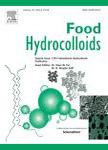版权所有:内蒙古大学图书馆 技术提供:维普资讯• 智图
内蒙古自治区呼和浩特市赛罕区大学西街235号 邮编: 010021

作者机构:SKL of Marine Food Processing & Safety Control National Engineering Research Center of Seafood School of Food Science and Technology Dalian Polytechnic University Dalian116034 China Engineering Research Center of Food Dalian Polytechnic University Dalian116034 China
出 版 物:《Food Hydrocolloids》 (Food Hydrocolloids)
年 卷 期:2024年第155卷
核心收录:
学科分类:0832[工学-食品科学与工程(可授工学、农学学位)] 1201[管理学-管理科学与工程(可授管理学、工学学位)] 0817[工学-化学工程与技术] 08[工学] 0703[理学-化学]
基 金:This work was financially supported by the National Natural Science Foundation of China (No. 32372323) the Central Guidance on Local Science and Technology Development Fund of Dalian and the Graduate Innovation Fund of Dalian Polytechnic University
主 题:Proteins
摘 要:Antarctic krill is a consumption resource with great exploitation potential. Previous study has found that carrageenan contributed to the improvement of texture characteristics of Antarctic krill surimi, but the specific synergistic mechanism remains unclear. This study aimed to evaluate and map the synergistic effect of κ-carrageenan on the quality properties of the myofibrillar protein complex gels of Antarctic krill and its potential modification sites. The analysis of physical quality, structure and molecular force showed that the incorporation of κCG induced the unfolding of myofibrillar proteins, resulting in alterations in the spatial conformation of the proteins, exposure of side-chain groups, and enhancement of intramolecular or intermolecular interactions in the gel system, which increased crosslinking of the MP-κCG composite gel networks. The higher degree of cross-linking facilitated the formation of denser network structures with higher storage and loss moduli, ultimately leading to improved gel quality properties. Notably, κCG plays a dual role in the gel network: it can not only support and stabilize the network structure of gel protein by filling the gaps, but also directly participate in the formation of gels by non-covalent and covalent interactions. Through the identification of the potential modification sites of κCG on Antarctic krill proteins, it was found that the main modified protein was myosin heavy chain and actin. Furthermore, lysine, arginine, threonine, serine and histidine were found to have high adduction quantities and reaction efficiencies. These findings are helpful to guide the quality control of Antarctic krill meat in the application process. © 2024